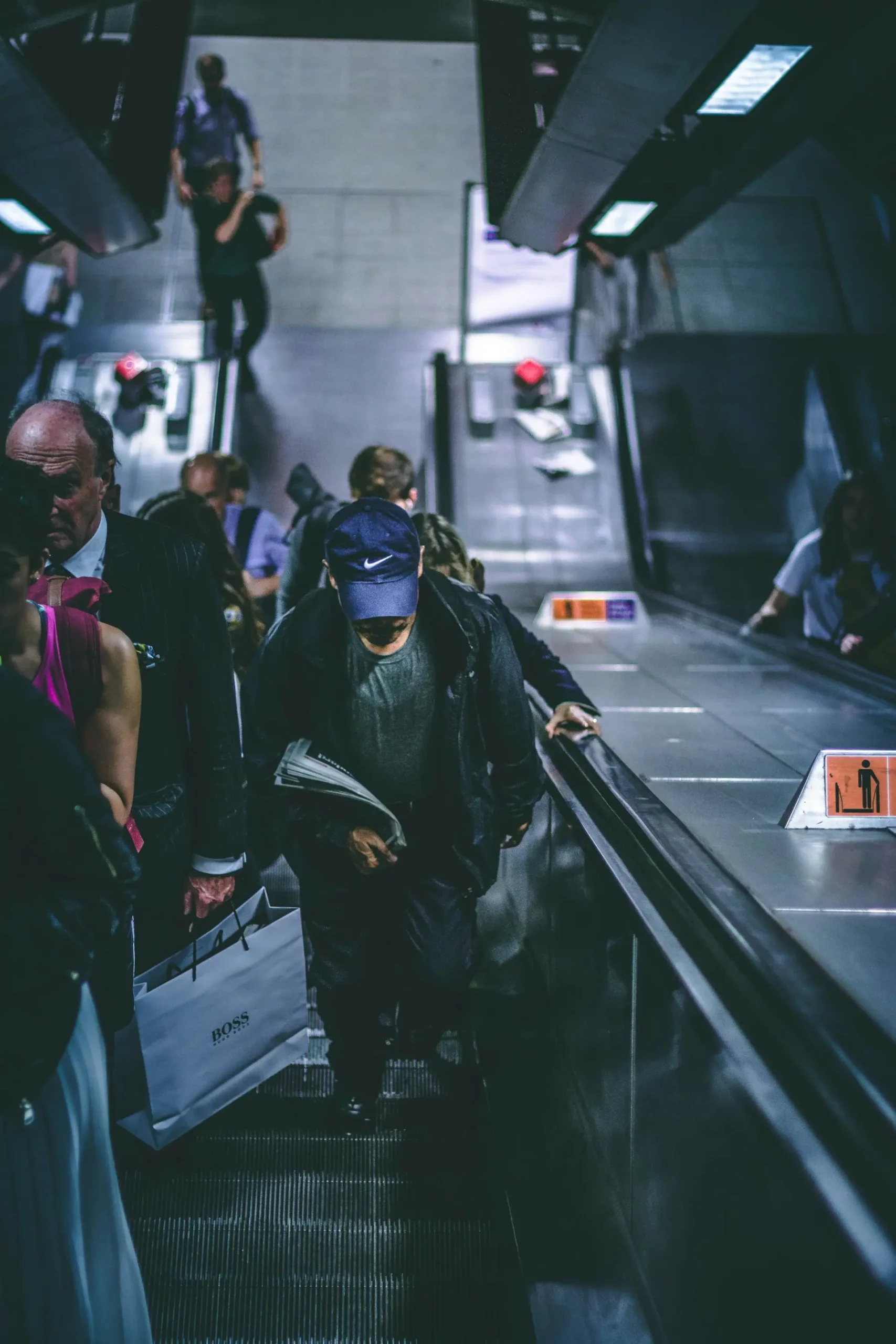Escalators are marvels of modern engineering, streamlining vertical transportation in bustling urban environments. These moving staircases efficiently transport people between different levels of buildings, subway stations, and shopping centers. However, despite their convenience, escalators can become congested and potentially hazardous if proper etiquette is not observed. In this guide, we will explore simple yet essential rules of escalator etiquette that not only ensure safety but also promote a courteous and efficient flow of people. By understanding and practicing these guidelines, everyone can contribute to a more pleasant shared experience in public spaces.
Jump to:
Understanding Etiquette for Escalators Dynamics
Before delving into etiquette, it’s crucial to understand the dynamics of escalator operation. Escalators consist of moving steps that continuously cycle between the top and bottom platforms. The design includes handrails that move in sync with the steps, providing stability for passengers. Typically, passengers stand on the right side of the escalator to allow others to pass on the left. However, in some regions, this convention may be reversed.
The mechanical intricacies of escalators are designed to handle a significant volume of passengers efficiently. Sensors and safety mechanisms ensure that the escalator operates smoothly, halting in case of emergencies. Understanding these basic operational principles helps in appreciating the need for proper usage and etiquette. A single person standing improperly or blocking the passage can disrupt the flow, leading to delays and potential safety hazards.
Furthermore, the dynamics also involve human behavior. People have different walking speeds and levels of urgency. Some might be leisurely taking in the surroundings, while others are rushing to catch a train or meet an appointment. Recognizing and respecting these dynamics through proper etiquette ensures that everyone can use the escalator according to their needs without causing inconvenience to others.
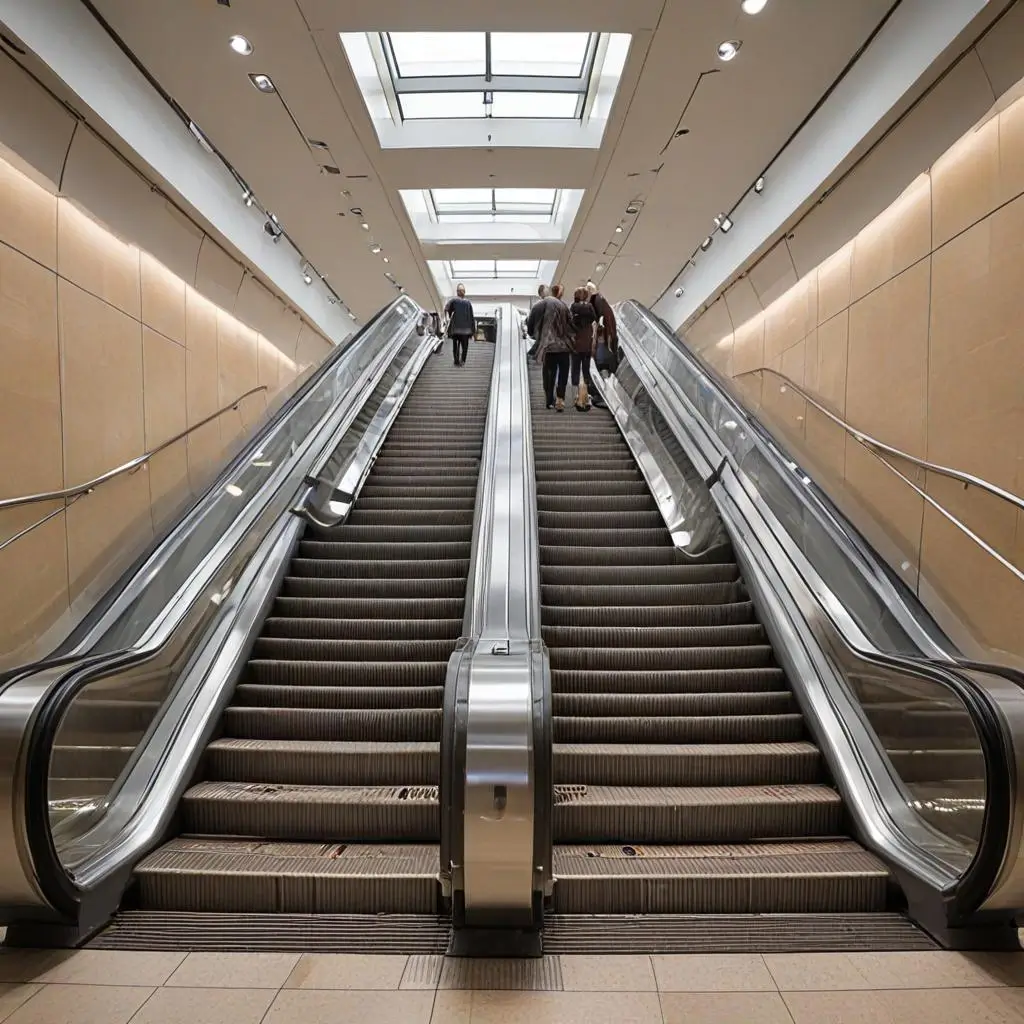
Etiquette for Escalators Guidelines
Stand on the Right, Walk on the Left
Standing on the right side of the escalator allows space for those in a hurry to pass on the left. This simple rule prevents congestion and ensures a smooth flow of traffic. Even if you’re not in a rush, standing on the right is courteous to fellow passengers. In many urban areas, this practice is a well-established norm, reducing potential conflicts and promoting an efficient movement system.
When everyone adheres to this guideline, the escalator can accommodate both those who are content to stand and those who need to move quickly. It’s a small act of consideration that goes a long way in creating a harmonious public environment. For instance, during peak hours in busy metro stations, the distinction between standing and walking lanes becomes crucial in managing crowd flow and minimizing delays.
However, it’s important to note regional differences. In some places, the convention might be to stand on the left and walk on the right. Observing the behavior of locals can provide clues on which side to stand. Adapting to these variations not only shows cultural sensitivity but also helps in blending seamlessly into different urban settings.
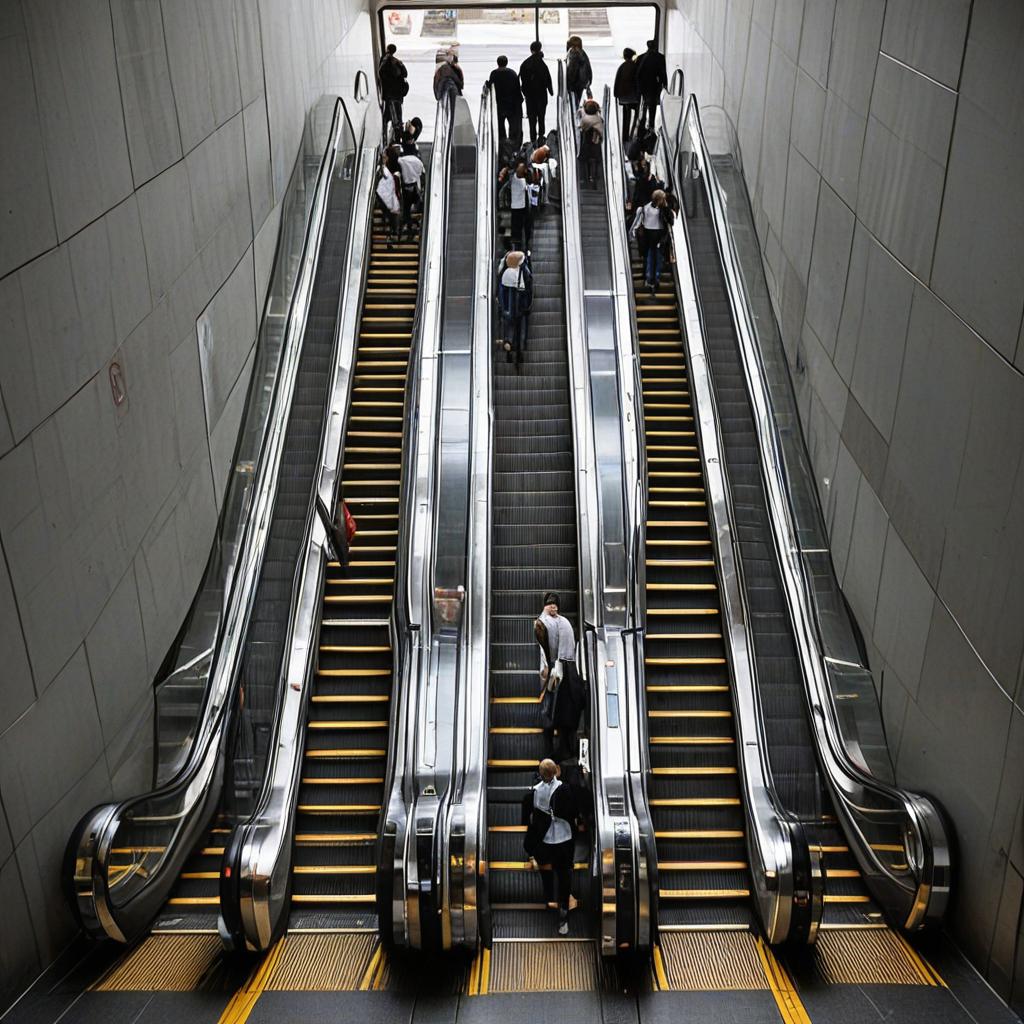
Keep a Safe Distance
Maintain a safe distance from the person in front of you, especially during peak hours when escalators are crowded. This prevents accidental bumping or stepping on the heels of the person ahead. Ideally, leave at least one step’s space between you and the next passenger. This buffer zone provides sufficient reaction time if the person ahead suddenly stops or stumbles.
Crowded escalators can create a sense of urgency, but maintaining distance is crucial for safety. Close proximity increases the risk of collisions, which can cause falls and injuries. By keeping a respectful distance, you also respect the personal space of others, making the ride more comfortable for everyone involved.
Additionally, during busy times, it’s common for people to carry bags, backpacks, or even children. Extra space ensures that these items do not inadvertently touch or hit the person in front, reducing discomfort and potential altercations. It also gives enough room to maneuver in case you need to adjust your stance or handle your belongings.
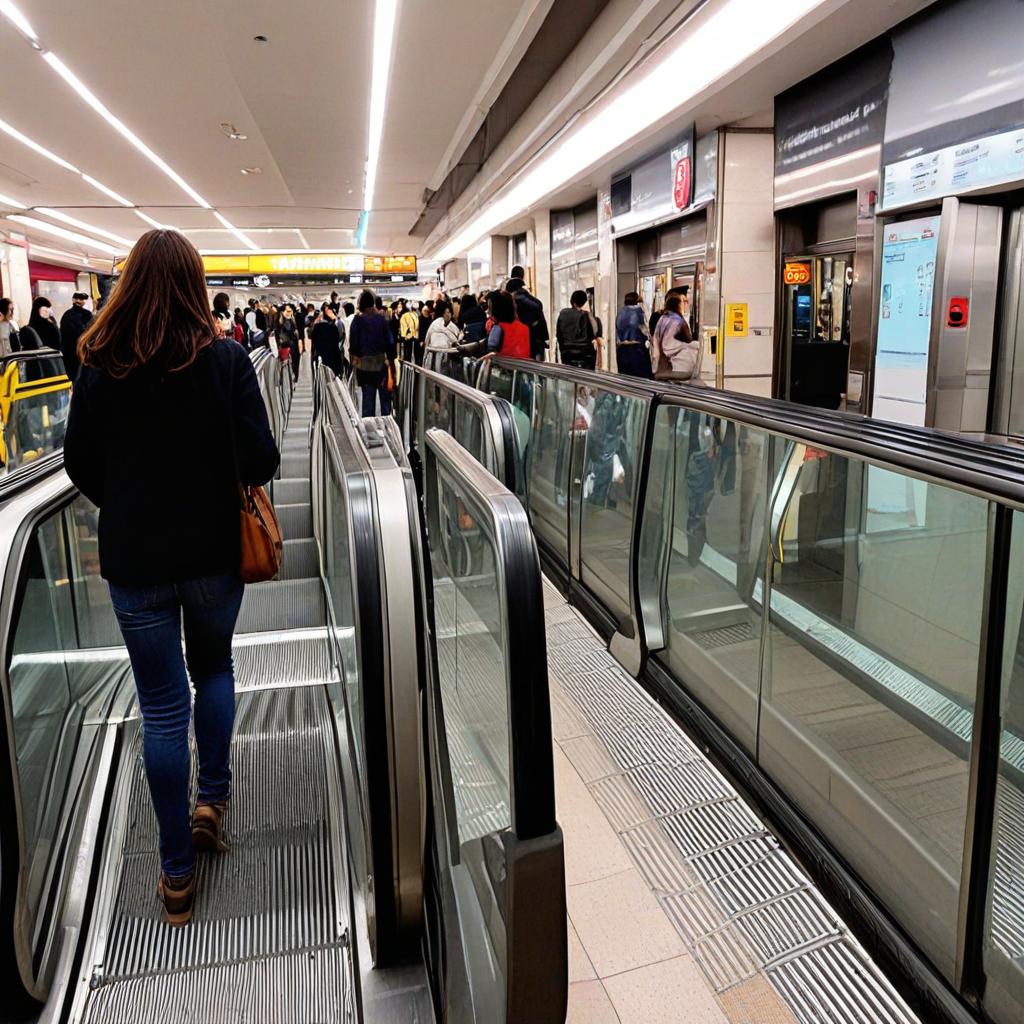
Mind Your Belongings
Avoid placing bags, luggage, or other items on the steps beside you. Keep personal belongings close to your body to prevent them from obstructing the path of other passengers or getting caught in the escalator mechanisms. Loose items can easily slip between steps or get entangled in the moving parts, causing damage or malfunctions.
Large bags and strollers pose a particular challenge on escalators. If you must carry them, ensure they are positioned securely and do not extend beyond your immediate area. Holding them in front or directly beside you, without letting them spill over into adjacent steps, minimizes the risk of accidents.
Electronic devices, such as phones and tablets, should also be handled with care. Avoid using them while boarding or exiting the escalator, as distraction can lead to mishaps. Keeping your belongings well-managed not only ensures your safety but also maintains the efficiency and safety of the escalator for everyone else.

Hold the Handrail
For safety reasons, it’s advisable to hold onto the handrail while riding the escalator, especially if you’re carrying heavy bags or have difficulty balancing. Gripping the handrail provides stability and reduces the risk of accidents, particularly on steep or fast-moving escalators. The handrail moves at the same speed as the steps, offering a consistent point of support throughout the ride.
Handrails are designed to help maintain balance and prevent falls, which can be particularly beneficial for the elderly, children, and those with mobility issues. Even in less crowded situations, holding the handrail is a good practice as it prepares you for any unexpected stops or movements.
While some might feel confident enough to ride without holding the handrail, it’s important to consider the safety of those around you. Sudden stops or jolts can occur, and having a steady grip helps in maintaining control. Encouraging children to hold the handrail instills good habits and ensures their safety as well.
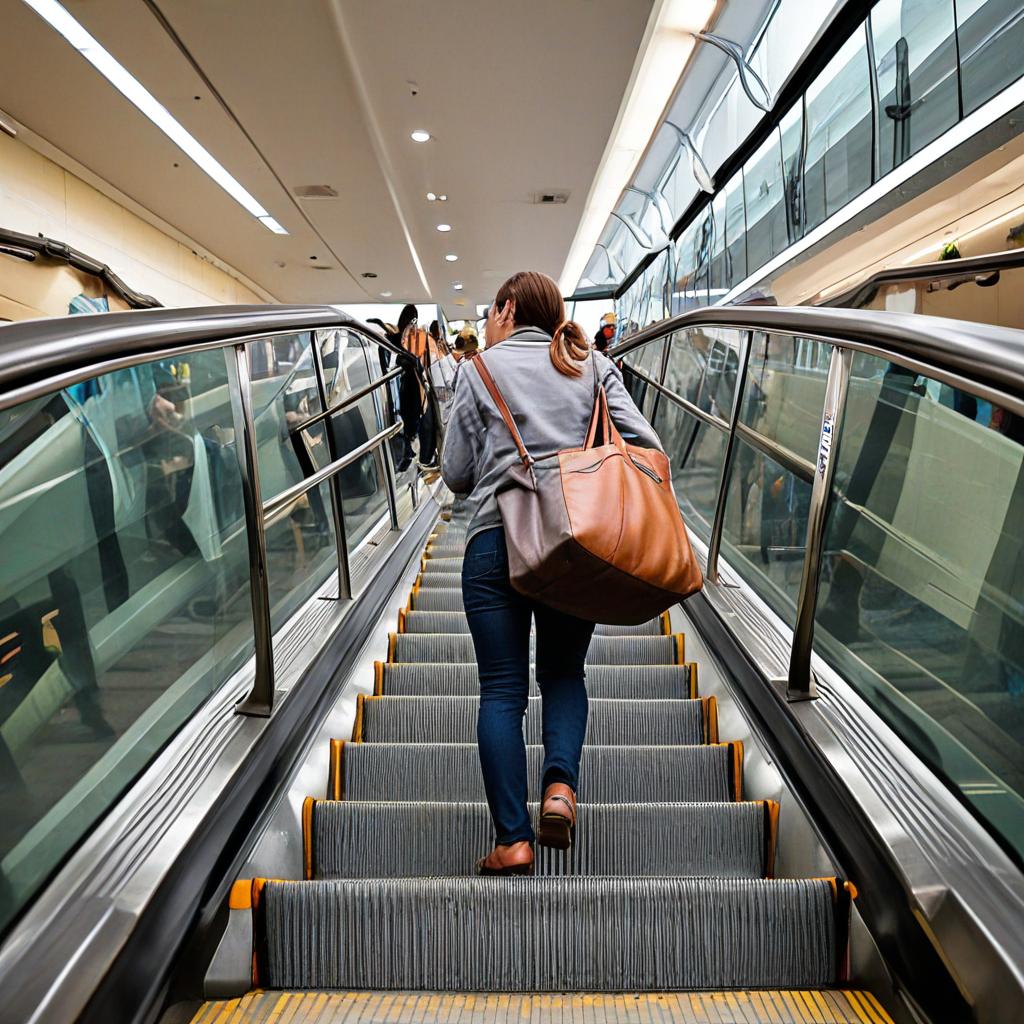
Be Patient and Courteous
If you’re waiting to board the escalator, allow passengers to exit first before stepping onto the moving steps. Pushing or rushing onto the escalator can lead to collisions and delays. Exercise patience and wait for your turn to ensure a smooth transition. This practice also prevents crowding at the entrance, making the process orderly and efficient.
During peak times, the volume of passengers can test patience, but maintaining a calm demeanor and respecting the queue reflects good manners. A few seconds of waiting can significantly enhance the overall experience for everyone involved. Rushing not only endangers you but also those around you, potentially causing a chain reaction of bumps and falls.
Similarly, if someone is struggling to step onto the escalator, offer a moment of patience. Give them space to find their footing without feeling pressured. This simple act of kindness can make a big difference, especially for individuals who may be nervous or unfamiliar with escalators.

Avoid Crowding at the Top or Bottom
Upon reaching the top or bottom platform, move away promptly to make room for others exiting the escalator behind you. Congregating at the exit points can cause bottlenecks and impede the flow of traffic. Keep the areas clear for smoother transitions. Standing idle or waiting for companions in these areas disrupts the continuous flow of passengers, leading to potential accidents and congestion.
Being mindful of your surroundings and acting swiftly once you reach the end of the ride is crucial. Clear exit points facilitate the next passengers’ smooth departure from the escalator. This is particularly important in busy areas like shopping malls or transit stations where a steady stream of people relies on unobstructed exits.
If you need to regroup with friends or check directions, move a few steps away from the exit area. This small adjustment helps in maintaining an efficient flow and reduces the likelihood of crowd-induced delays or mishaps. By keeping these areas clear, you contribute to a more organized and safer environment for everyone.
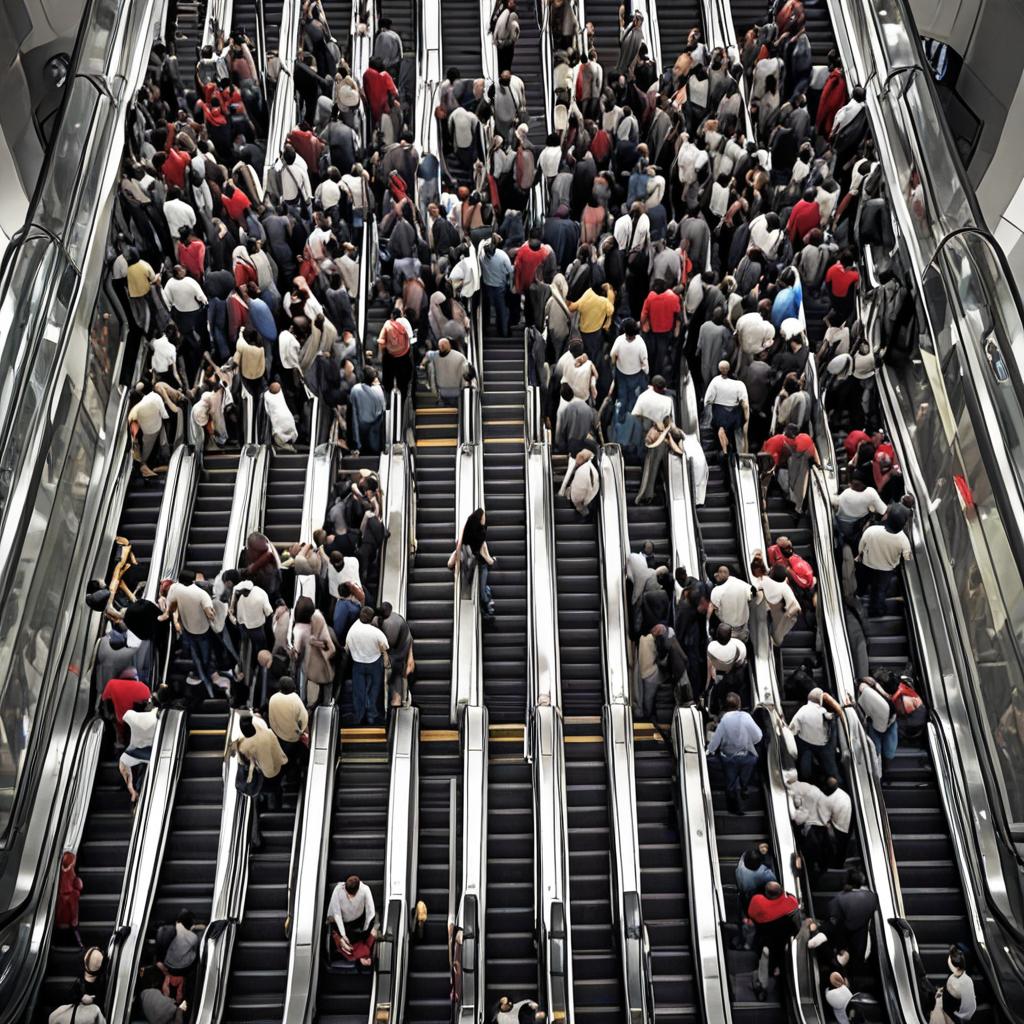
Offer Assistance When Needed
If you notice someone struggling with heavy luggage, strollers, or mobility devices, offer assistance if appropriate. Holding doors open or providing a helping hand can make the escalator experience more manageable for everyone. This act of kindness not only helps the individual in need but also enhances the overall atmosphere of cooperation and respect.
Many people may feel embarrassed or hesitant to ask for help, so a proactive offer can be very reassuring. Whether it’s helping a parent navigate a stroller onto the escalator or assisting an elderly person with their bags, these small gestures foster a sense of community and mutual support.
However, it’s important to gauge the situation and ensure your assistance is welcome. Some may prefer to manage on their own, so a polite offer, rather than assumption, is the best approach. If declined, respect their decision and continue with your journey. Your willingness to help reflects positively on you and contributes to a more courteous and considerate public space.
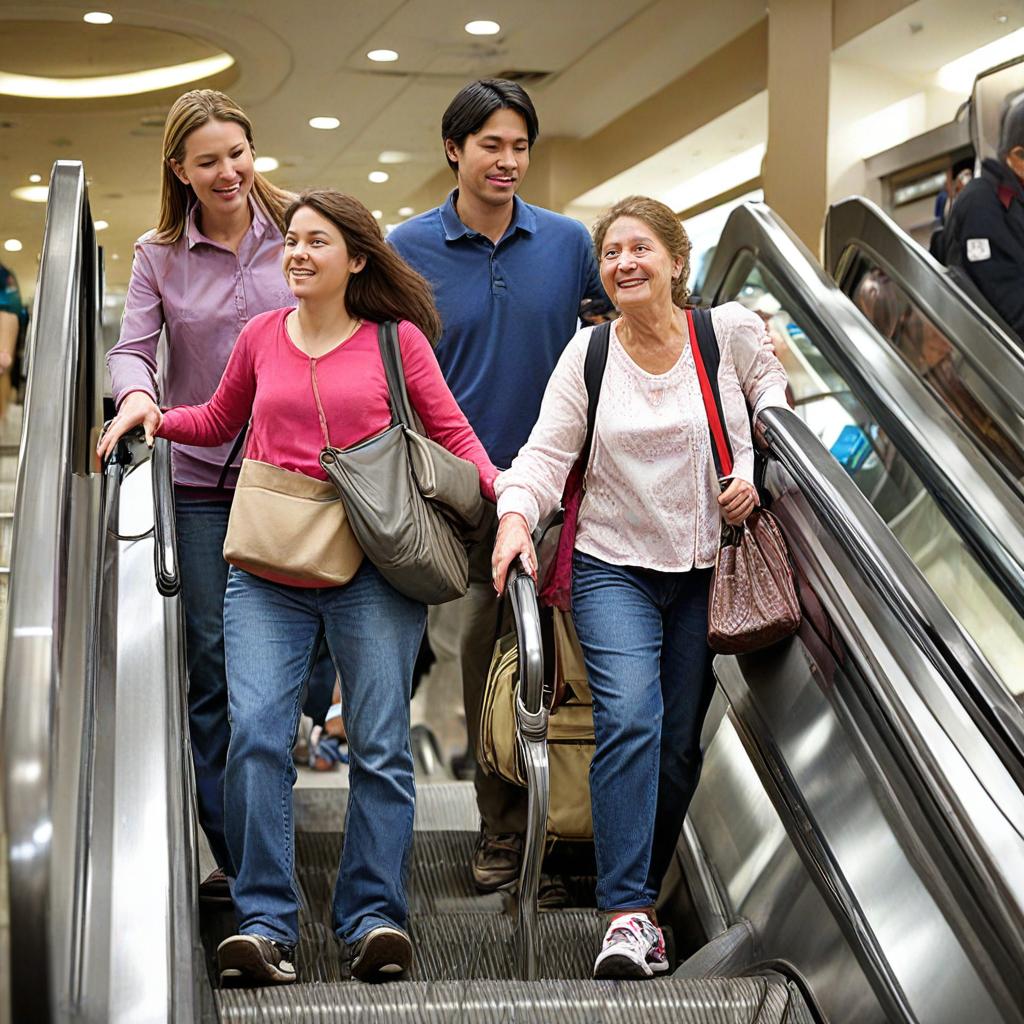
Cultural Variations
It’s essential to acknowledge that escalator etiquette may vary across cultures and regions. While standing on the right and walking on the left is a common practice in many countries, there are exceptions. Travelers should familiarize themselves with local customs to avoid unintentionally causing confusion or inconvenience.
For instance, in Japan, especially in cities like Tokyo, the convention is to stand on the left and walk on the right. In contrast, in Osaka, it’s the opposite. These regional differences are deeply ingrained and observing them shows respect for local practices. Researching or observing local behavior can quickly inform you of the expected norms, ensuring you blend in and contribute to the orderly flow.
Moreover, cultural attitudes towards personal space, urgency, and public behavior can influence how escalator etiquette is perceived and practiced. In some cultures, the emphasis might be more on collective efficiency, while in others, individual convenience might take precedence. Adapting to these variations not only makes your travels smoother but also enriches your understanding of different social dynamics. Check out our Escalators | Topic Page.
People Also Ask
What is the correct side to stand on when using an escalator?
You should stand on the right side and walk on the left. This allows those in a hurry to pass on the left side.
Why is it important to hold the handrail on an escalator?
Holding the handrail provides stability and can prevent falls, especially if the escalator stops or starts unexpectedly.
How can I ensure my safety when using an escalator?
To ensure safety, always hold the handrail, watch your step when getting on and off, and avoid obstructing the steps with bags or other items.
What should I do if the escalator stops suddenly?
Stay calm and follow any instructions given by staff. Use the emergency stop button if necessary and move carefully to the nearest exit.
How can I be considerate of others when using an escalator?
Be mindful of personal space, avoid blocking the entrance and exit, and offer assistance to those who may need it, such as the elderly or those with heavy luggage.
Conclusion
Mastering simple etiquette for escalators enhances the overall experience for passengers and contributes to a safer and more efficient transportation system. By following these guidelines, individuals can navigate escalators with courtesy, respect, and mindfulness of others. Whether commuting to work or exploring new destinations, practicing good escalator etiquette is a small yet significant way to promote harmony and civility in shared spaces.
Practicing these guidelines consistently ensures that escalators remain a reliable and convenient mode of transportation. It fosters an environment where everyone, regardless of their pace or purpose, can coexist comfortably. Small acts of consideration and awareness, such as standing on the correct side, maintaining distance, and offering help, collectively make a big difference in enhancing public spaces.
In a world where urbanization and public transport usage are on the rise, understanding and adhering to escalator etiquette is more important than ever. It not only reflects individual manners but also contributes to the collective well-being of society. By embracing these simple rules, we can ensure that our journeys, whether short or long, are smooth, safe, and pleasant for all.

